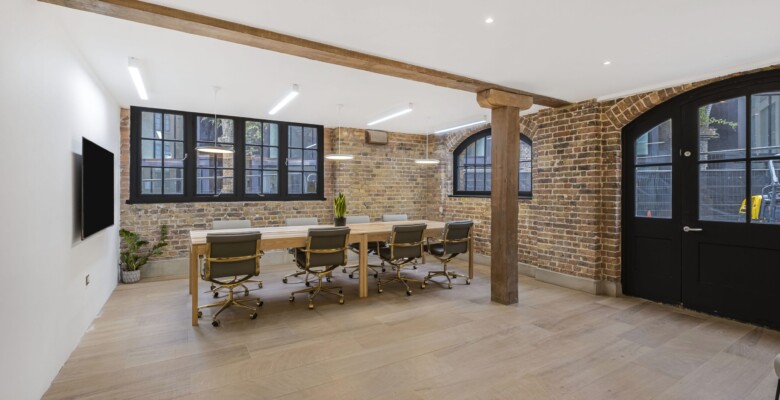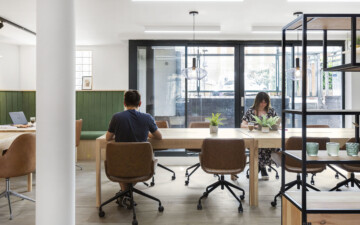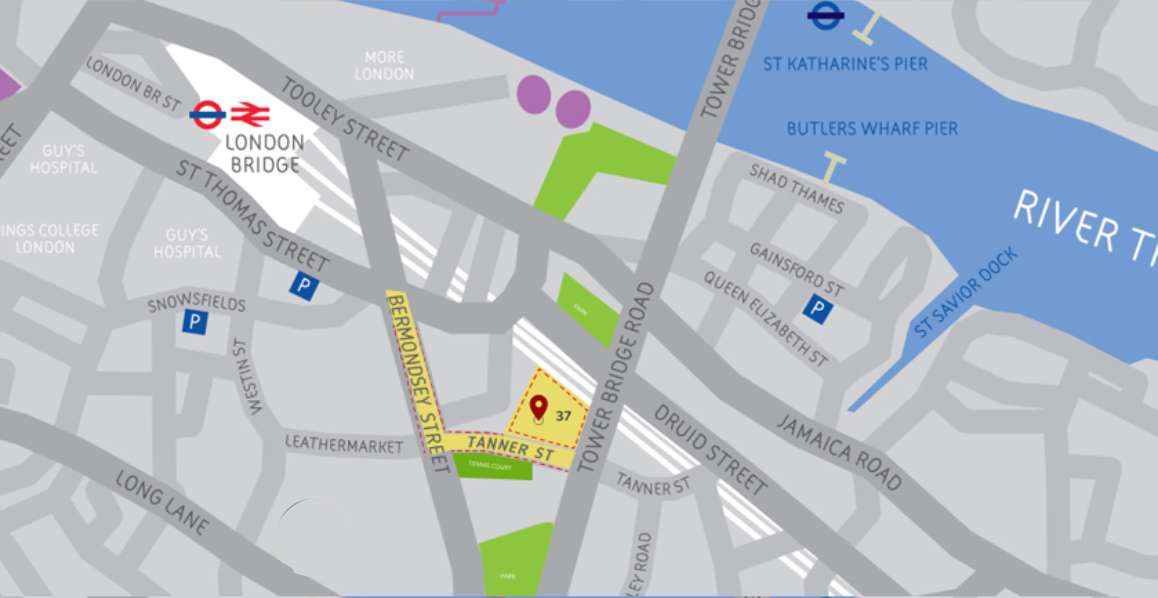In an era where data breaches and security threats seem to be an everyday feature, ensuring workplace security has never been more critical. According to a 2023 report by IBM, the average cost of a data breach has surged to $4.45 million, a stark reminder of the high stakes involved in securing your organisational assets. Furthermore, a survey by the Ponemon Institute revealed that 68% of businesses have experienced at least one security breach in the past year, highlighting the urgency of implementing security measures.
This guide offers you valuable insights into workplace security and provides strategies to enhance it. By following these guidelines, organisations can create a secure and productive work environment.
What Is Workplace Security?
Workplace security encompasses an array of strategies, policies, and technologies that are designed to protect the physical and digital assets of an organisation. This includes safeguarding employees, proprietary information, and physical infrastructure from threats like unauthorised access, cyber-attacks, and physical violence. Effective security at a workplace is crucial to maintain operational continuity and to foster a safe and productive environment for everyone.
Why Is Workplace Security Important?
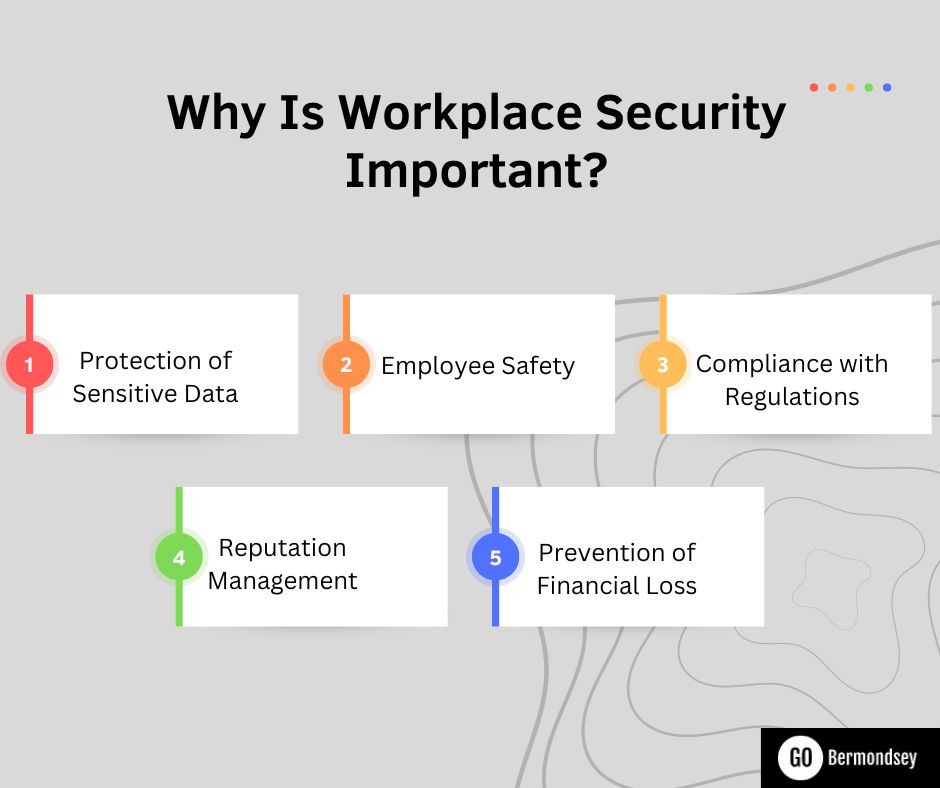
1. Protection of Sensitive Data
Given our increasing digital dependence, most organisations handle large amounts of sensitive information and data. It is necessary to protect this data from cyber threats and breaches. Data breaches can lead to significant financial losses, legal consequences, and can damage an organisation’s reputation.
2. Employee Safety
The physical safety of employees is very important. Workplace security measures can prevent unauthorised access and ensure that staff feel secure, which is necessary to maintaining higher levels of morale and productivity. When employees feel safe, they tend to be more engaged, motivated, and loyal to the organisation.
3. Compliance with Regulations
Many professional fields are subject to stringent security regulations. Making sure these regulations are followed not only avoids legal repercussions but also shows a commitment to best practices in workplace security. Regulatory compliance will help you gain the trust of clients, partners, and stakeholders. It also ensures that the organisation is prepared for audits and inspections, reducing the risk of fines and penalties.
4. Reputation Management
Security breaches can severely damage an organisation’s reputation. A good reputation regarding workplace security can become a competitive advantage, attracting customers who prioritise data protection and safety. On the other hand, a breach in security may lead to negative publicity, loss of business, and can have a long-term impact on the company’s image.
5. Prevention of Financial Loss
Security incidents, from theft and vandalism to data breaches, can lead to financial losses. Effective security measures can reduce these risks. By investing in workplace security, businesses can avoid the costs associated with such security breaches, like legal fees, regulatory fines, and the expense of recovering from an incident. A secure workplace can also reduce insurance premiums and other related costs.
How to Maintain Workplace Security
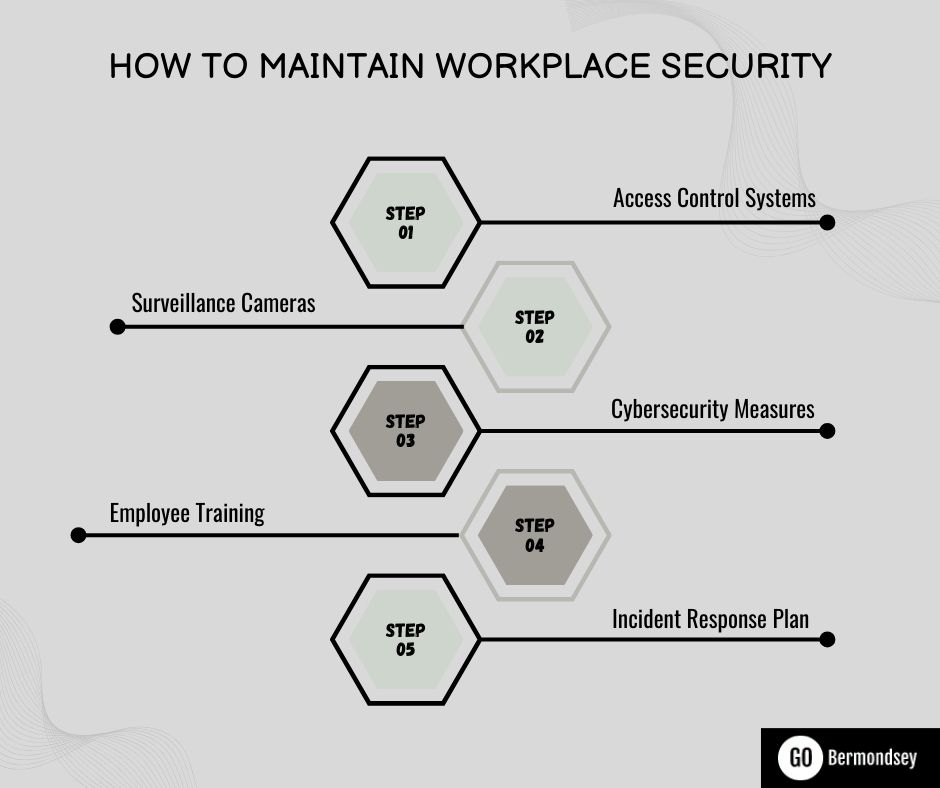
Maintaining workplace security requires a multifaceted approach. Here are some key strategies that can be implemented:
1. Access Control Systems
These systems ensure that only authorised personnel may enter certain areas. They may include key cards, biometric scanners, and secure login protocols. These systems also prevent unauthorised access and reduce the risk of theft, vandalism, and other security incidents.
2. Surveillance Cameras
Installing surveillance cameras can deter potential intruders and provide valuable footage in case there is a breach of security. High-definition cameras with night vision and motion detection can monitor critical areas around the clock. This also ensures that you have evidence that can aid in investigations and legal proceedings.
3. Cybersecurity Measures
Strong cybersecurity protocols, like firewalls, and encryption, are essential for protecting digital assets. Cybersecurity measures must include antivirus software, intrusion detection systems, and regular security audits. Implementing secure network practices, such as using virtual private networks (VPNs) and secure file-sharing platforms will further enhance security in the workplace.
4. Employee Training
Regular training sessions can make sure that employees are aware of security policies and know how to respond to threats. Training programs must cover topics such as identifying phishing attempts, using strong passwords, and reporting suspicious activities, thereby creating a culture of security awareness and vigilance.
5. Incident Response Plan
Having a clear incident response plan enables swift and effective action. A contingency response plan should outline the steps to be taken, and should include identifying the threat, containing the breach, and communicating with stakeholders.
Tips to Improve Workplace Security
- Conduct Regular Audits: This can help identify vulnerabilities and areas that require improvement. Audits should assess physical security measures, cybersecurity protocols, and employee compliance with workplace security policies.
- Implement Strong Password Policies: Encourage your employees to use complex passwords and change them regularly.
- Use Multi-Factor Authentication (MFA): MFA adds an extra layer of security, making it harder for unauthorised individuals to access systems. MFA can include biometric verification, such as fingerprint or facial recognition, as well as one-time passcodes sent to a mobile device.
- Secure Physical Entry Points: All entry points must be secured with locks, alarms, and security personnel. Physical workplace security measures should include reinforced doors and windows, security gates, and access control systems.
- Monitor Network Activity: Continuously monitoring network activity can help detect and identify unusual patterns of activity, such as unauthorised access or data transfers.
Questions to Consider When Looking for a Workplace Analytics Software
- Does the software offer real-time monitoring?
Software that provides real-time alerts and notifications can help security teams take immediate action to prevent incidents.
- Is the software scalable?
Scalable software can adapt to changes in the organisation’s size, structure, and security requirements, thus providing long-term value and flexibility.
- Does it integrate with existing systems?
Seamless integration with access control systems, surveillance cameras, and cybersecurity tools can provide a comprehensive workplace security solution, enhancing the organisation’s ability to detect and respond to threats.
- What kind of support and training is provided?
Adequate support and training are essential for maximising the software’s effectiveness. Look for software providers that offer training programs, user guides, and customer support.
- What are the data privacy policies?
Ensure that the software complies with data privacy regulations and has measures to protect sensitive information.
Conclusion
At GO (Garden Office) Bermondsey, we understand the paramount importance of workplace security, thus providing a safe and productive environment for all. Our private office spaces have state-of-the-art security features, ensuring holistic security measures for businesses and their employees. From advanced access control systems to comprehensive surveillance, our facilities prioritise your safety and security. Discover a secure workplace with GO (Garden Office) Bermondsey today, and experience a safe, professional environment for your business to thrive.
